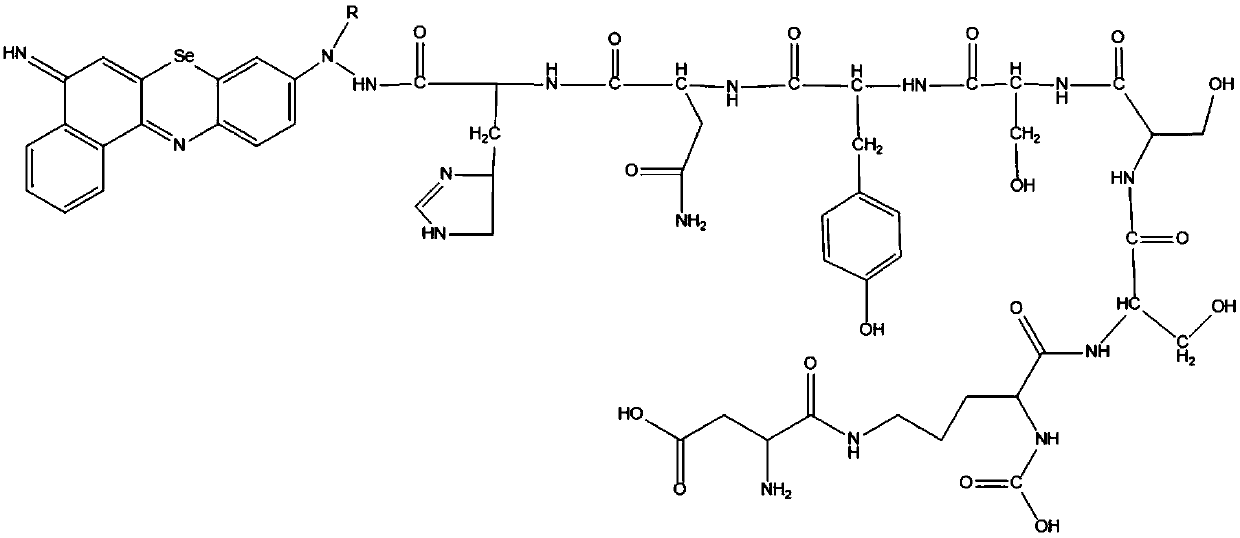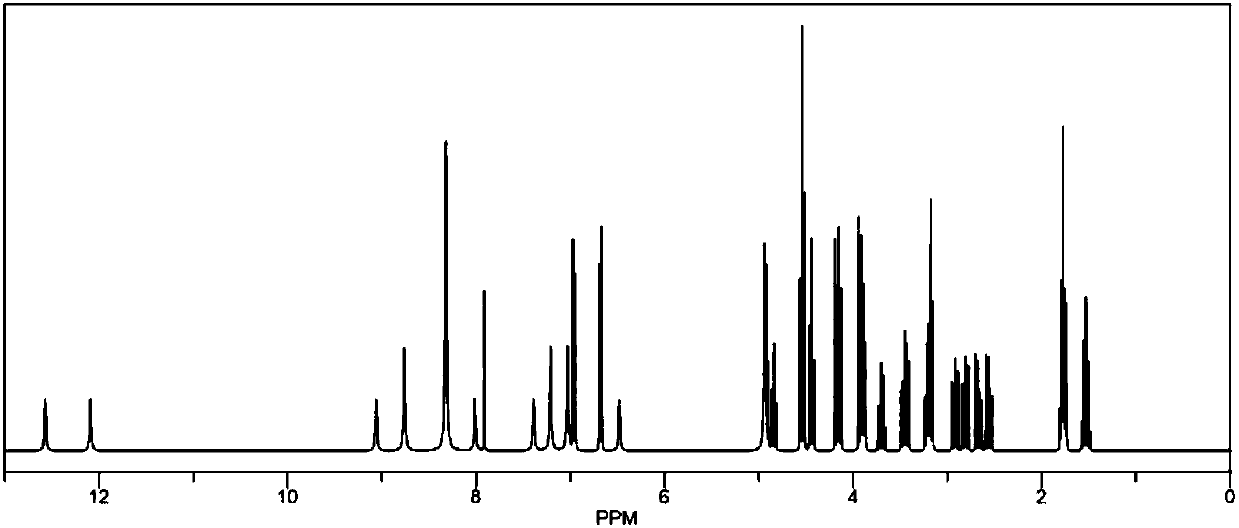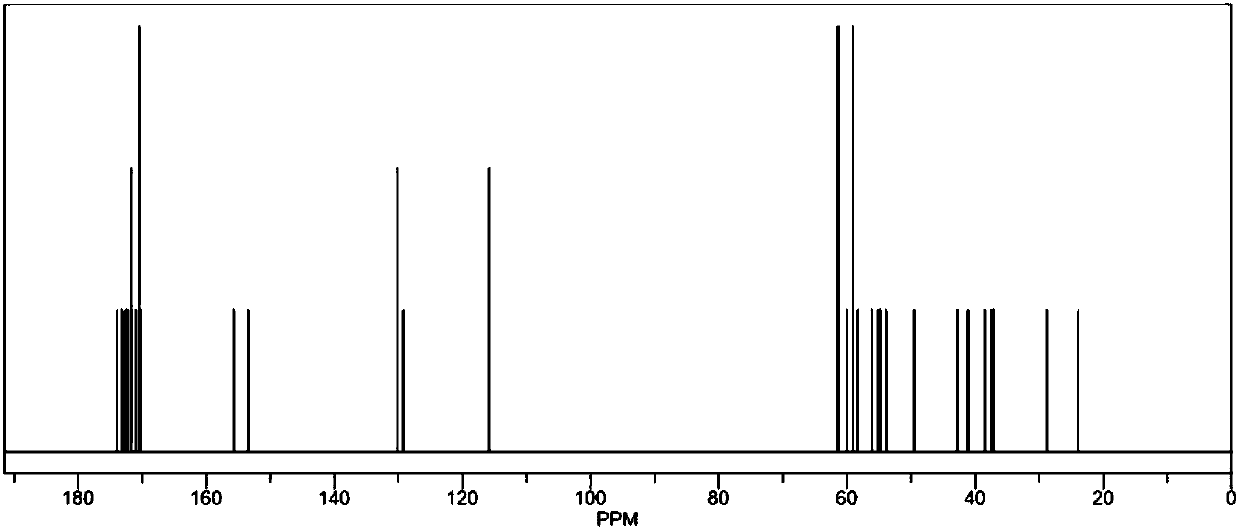Targeted cell-penetrating peptide photosensitizer and preparation method and application thereof
A cell-targeting and membrane-penetrating peptide technology, applied in peptide preparation methods, photodynamic therapy, chemical instruments and methods, etc., can solve problems such as low molar absorbance, tumor modification and transformation, and poor targeting of photosensitizers to tumor cells, etc. problem, to achieve the effect of increasing light absorption rate, promoting death, and good targeting
- Summary
- Abstract
- Description
- Claims
- Application Information
AI Technical Summary
Problems solved by technology
Method used
Image
Examples
Embodiment 1
[0029] The preparation method of the penetrating peptide photosensitizer includes the following steps: dissolving the selenium-containing benzophenoxazine compound in acetone or ethanol solution at 45°C-52°C; and putting the penetrating peptide at a pH of 6.8-7.2 Dissolved in DMSO solution under the conditions of. According to the molar ratio of the selenium benzophenoxazine compound and the penetrating peptide of 1:5-8, the penetrating peptide photosensitizer is obtained. The reaction formula is as follows:
[0030]
[0031] Use the hydrogen spectrum ( figure 2 ) And carbon spectrum ( image 3 ) For verification, it can be confirmed that the present invention has successfully synthesized the above-mentioned penetrating peptide photosensitizer.
Embodiment 2
[0032] Example 2: Targeting cell-penetrating peptide photosensitizer to make skin tumor cells apoptosis experiment
[0033] Annexin V is a reagent for detecting cell apoptosis. In normal cells, phosphatidylserine is only distributed on the inner side of the lipid bilayer of the cell membrane. In the early stage of cell apoptosis, the membrane phosphatidylserine (PS) turns from the inner side of the lipid membrane to Outside. Therefore, Annexin V is a sensitive indicator for detecting early cell apoptosis. PI (propidium iodide) is a nuclear staining reagent that can stain DNA. Although PI cannot pass through living cell membranes, it can pass through damaged cell membranes to stain nuclei. Therefore, the combined use of Annexin V and PI can stain live and dead cells at the same time.
[0034] (1) Experimental method
[0035] Squamous cell carcinoma cell line A-431 was cultured in DMEM medium with 10% calf serum, added with 100IU / L penicillin and 100mg / L streptomycin, and placed in ...
PUM
 Login to View More
Login to View More Abstract
Description
Claims
Application Information
 Login to View More
Login to View More - R&D
- Intellectual Property
- Life Sciences
- Materials
- Tech Scout
- Unparalleled Data Quality
- Higher Quality Content
- 60% Fewer Hallucinations
Browse by: Latest US Patents, China's latest patents, Technical Efficacy Thesaurus, Application Domain, Technology Topic, Popular Technical Reports.
© 2025 PatSnap. All rights reserved.Legal|Privacy policy|Modern Slavery Act Transparency Statement|Sitemap|About US| Contact US: help@patsnap.com



